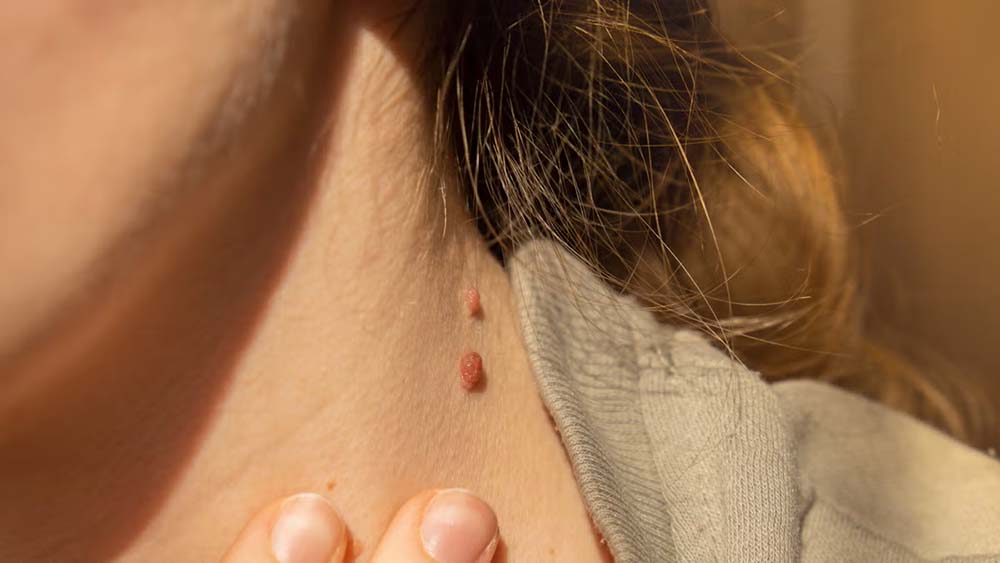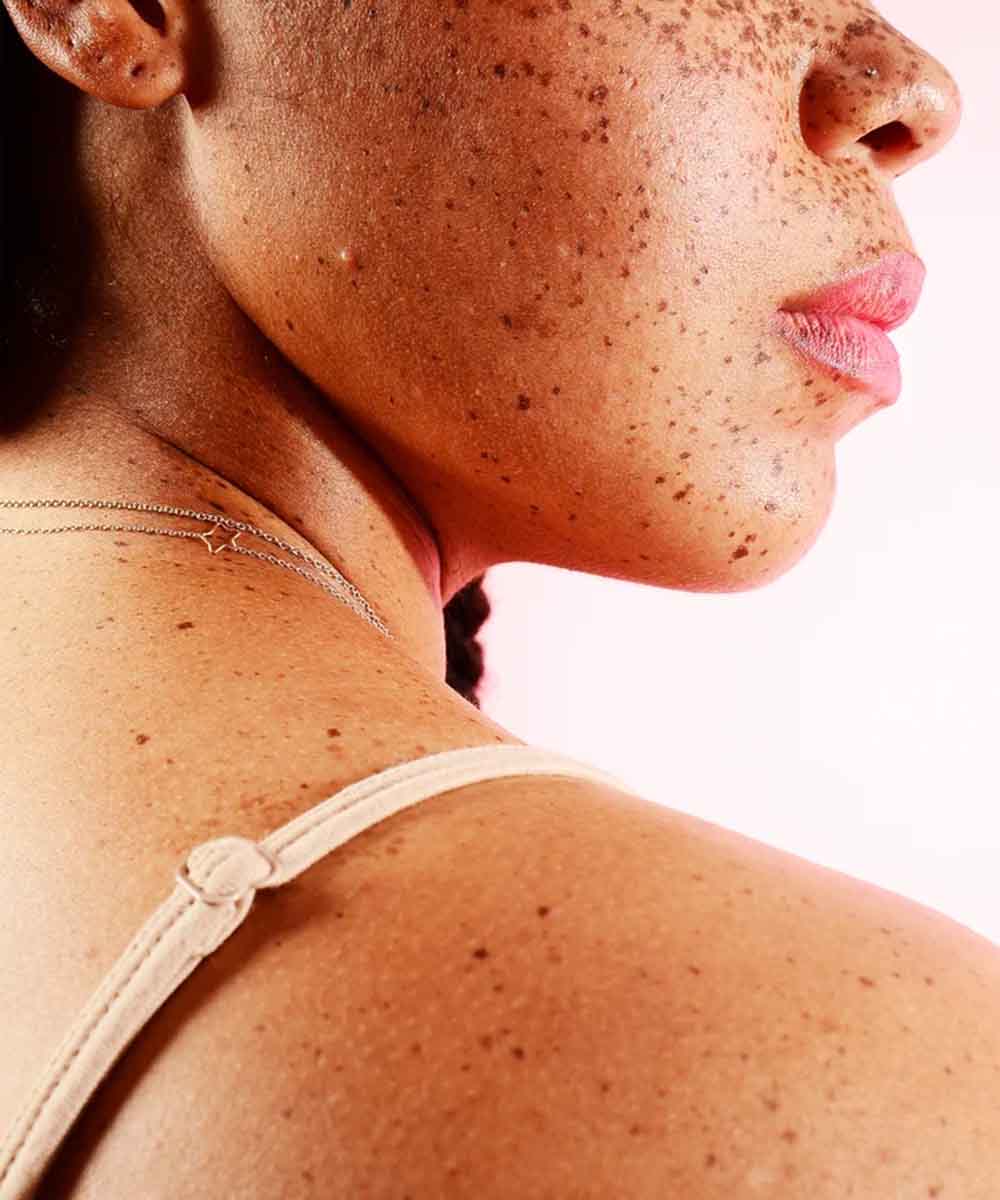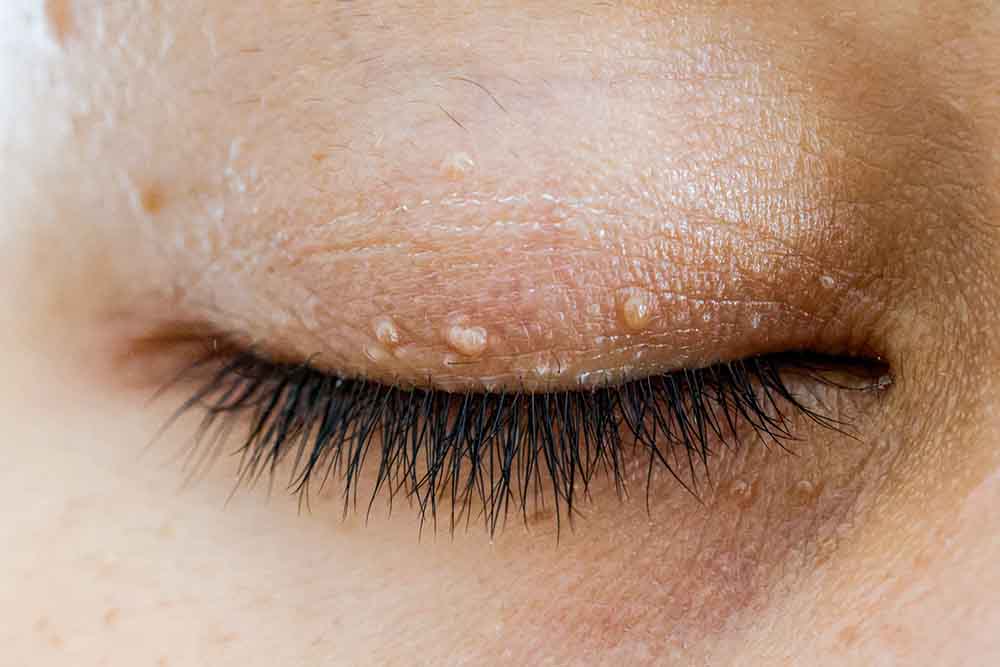You may notice these bumps on yours or other people’s necks, face or armpits. Although they can form anywhere on your skin, skin tags are innocuous growths that frequently appear on the neck, eyelids, or underarms. They aren’t present since birth, neither do they fall under the category of moles. These tags develop due to several factors over time. They could be darker or the same colour as your skin. There are some that are pink, others are red as they get agitated. Some may be securely attached to the skin, some may be hanging from a stalk. The medical term for it is Acrochordons. Despite its variance in size, timing and occurrence on the skin, it seems to share one common characteristic - everybody wishes to get rid of it!

A skin tag should only be removed if it irritates you, causes discomfort, or interferes with your vision. No one knows your skin better than a certified dermatologist, so if one or more of your skin tags match this description, get in touch with them. Although these growths can form anywhere on the skin, they usually do so in areas where the skin has been in contact with clothing, jewellery, or when shaving. They typically appear in one or more of the following areas:
• Breasts (under)
• Eyelids
• Groin
• Neck folds (or the areas where jewellery or clothes touch the neck)
• Underarms
Additionally, skin tags are frequently discovered on the back, sides, or belly.
Skin tags typically appear after midlife and are highly prevalent. They have an equal impact on men and women. Skin tags can develop as a result of numerous underlying conditions, including:

Genetics: Skin tags can affect both men and women, particularly if their parents or siblings have them. \
For women: It’s quite common in women as they undergo hormonal fluctuations, particularly during the transition to menopause. Additional skin tags may also develop as a result of hormonal changes during pregnancy.
Being overweight: The development of skin tags may be influenced by your weight. Increased friction in the places where your skin scrapes against another bit of skin could cause this. Excess skin cells can also be produced as a result of metabolic changes brought on by being overweight or obese.
Being diabetic: There’s a relation between your body’s insulin resistance and the development of skin tags. In fact, individuals with a lot of skin tags may be required to test for diabetes as skin tags as an early indicator of underlying insulin problems. Additionally, skin tags may indicate another underlying medical condition – high cholesterol.

Ageing: Collagen and elastin, two proteins necessary for young healthy skin, are produced less frequently by your skin as you age. Your chance of developing new skin tags may rise if these proteins are lost.
Preventive Measures
Although it is difficult to completely avoid skin tags, the following techniques may help lessen their occurrence:
• Maintaining a healthy weight may help lower the chance of developing skin tags, particularly in regions that are prone to friction.

• Prevent friction by keeping skin folds dry to reduce irritation and wearing loose-fitting clothing in high-friction regions.
• Steer clear of self-removal stunts! Attempting to remove skin tags at home increases the risk of scarring, infection, and other issues. It is important to consult an expert.
• Keep an eye out for any alterations or the emergence of new skin tags. If you observe any odd growths, consult a medical expert.

When To Seek Help
Skin tags are usually not harmful, but if they are causing discomfort, bleeding, or irritation, you should definitely see a doctor. You should also see a doctor when:
• You’re unclear about whether a growth is a skin tag or not.
• Skin tags alter in size, shape, or colour.
• The quantity of skin tags has abruptly increased.
Although skin tags are common, they may be removed for aesthetic reasons or if they start to cause problems. For safe and efficient removal, professional assistance is advised, and precautions should be taken to reduce the possibility of tag formation.